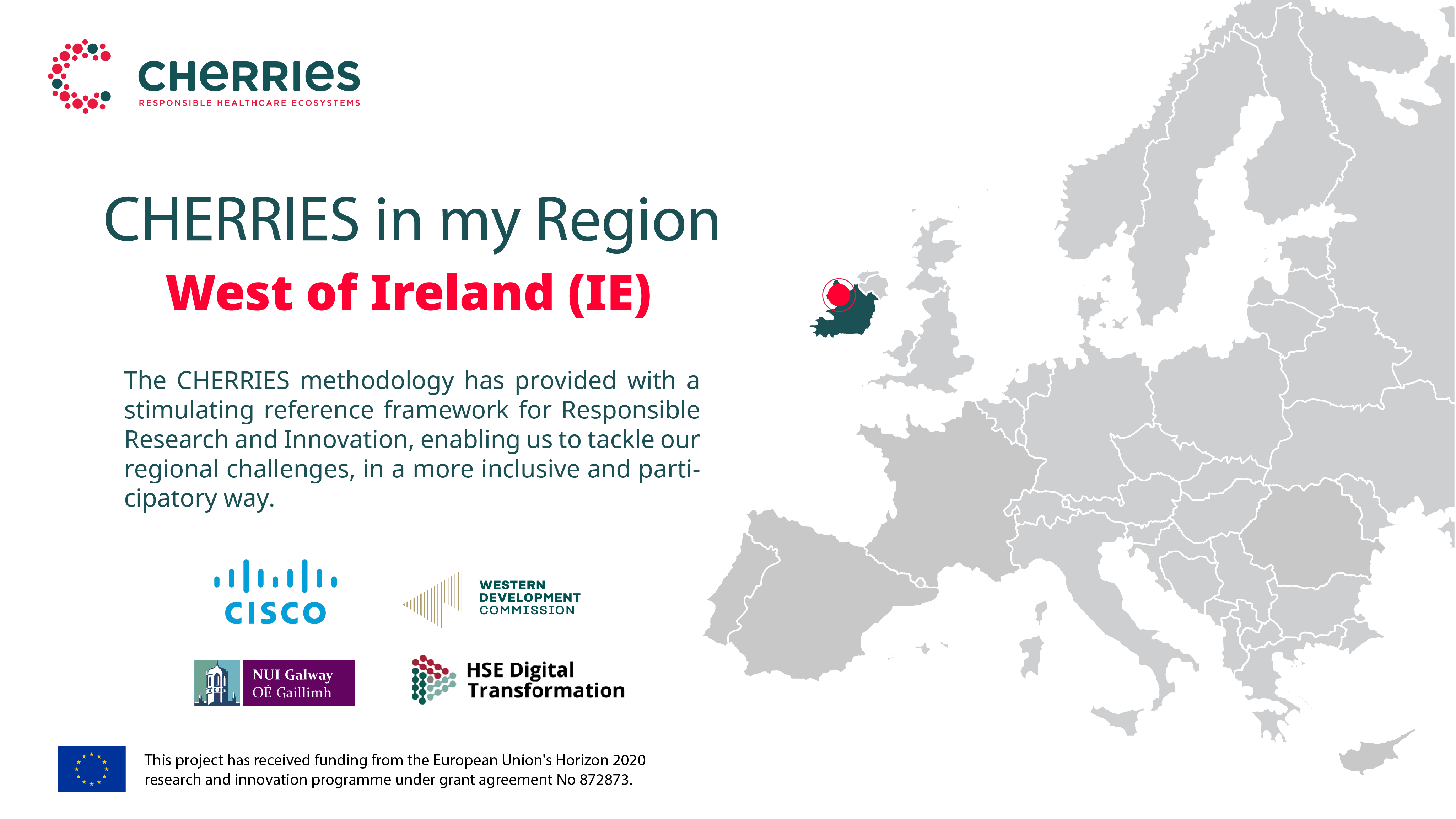- Priority Area: Provision of remote healthcare to isolated/rural communities
- Partners: WDC, HSE Digital Transformation, Mayo County Council, NUIG, Cisco
Why did you join the CHERRIES Community? What did you find interesting and relevant for you in the CHERRIES methodology?
Learning from other regions, supporting capacity building, and enhancing the tools we have in the region to address societal issues is part of the mission of WDC. We continuously seek to improve demand articulation, experimentation and to the co-creation process that we employ in the region. We are keen to avail of best practice in this area and increase the range of methodologies which we can employ to address challenges on a co-creation, co-participation basis in collaboration with a wide range of stakeholders, while engaging in responsible research and innovation. We intend to make most of regional strengths, assets, and resources to create maximum positive impact for this region, which is lagging behind the national average in most socio-economic criteria, is vulnerable to out-migration, and requires support to boost its recovery, resilience and growth potential.
What are the main challenges your territory is currently facing and addressing with innovative R&I strategies?
There are many challenges in the region. In terms of the project that we are focusing on, arose from a request from the people of the Clare Island to the WDC to help them make island living more sustainable. The project is a collaboration between the WDC, HSE Digital Transformation, Mayo County Council, NUIG, Cisco and others. It aims to provide an integrated digital health solution to the people of Clare Island and to proactively monitor and intervene for the health of the islanders.
The project stakeholders have proceeded to engage with the islanders, so that they can priorities their healthcare needs. In other developments, the project has engaged with mobile service providers to improve island connectivity. Connectivity, small sample size (relative to producing a statistically significant output), engagement with local stakeholders and community are all project-related specific challenges. For the people of Clare Island, a ‘Living Lab’ real world test approach would help reduce the number of journeys they would have to embark on to the mainland. It would provide them with an alternative to having to travel to see a doctor by using a digital closed loop system which will see islanders having medical consultations from the home or ‘Health Pod’. GPs will be able to electronically prescribe medications that can be delivered to the island via drone. Patients will be proactively monitored, and early interventions will help improve patient outcomes and reduce the cost of care.
What are the next steps the region will undertake to meet the demographic challenge?
STEP1
- Clinical needs assessment complete, identified conditions on Island project can address.
- Assessment of tech and infrastructure complete.
STEP2
- Engaged with public patient involvement and with different hospital service division around care delivery
- Selected appropriate patients, now establishing tech requirements.
STEP3
- Development of connectivity architecture for extending virtual consulting via hub to home.
- Creation of training materials, further engagement with community, real world testing.
- Health promotion, selection of patients, establishing tech requirements for systems.
All steps are done in co-creation.
